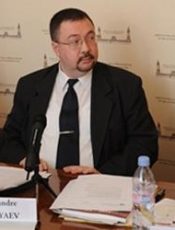Since the middle of February, the internal political situation in South Africa has worsened once again. During South African president Jacob Zuma’s annual address to the country’s parliament, the main opposition parties, primarily the Democratic Alliance and the Economic Freedom Fighters, became rowdy and delayed the president’s speech for an hour. For security reasons, the parliament building was surrounded not by the police, as it was last year, but by the SADF staff.
The opposition parties know they are not in a position to take power democratically, so the only choice they have is to destabilise the situation in the country. To be more precise, this means provoking bloodshed and seeing it through to a regime change. The actions of the parliamentary Economic Freedom Fighters party – insulting the country’s president or the parliamentary speaker and behaving like clowns – only seem like hooliganism at first glance. In fact, the tactic is intended to bring different segments of the population into conflict with each other and cause riots that will lead to fatalities. In the meantime, the Economic Freedom Fighters have so far done nothing to try and achieve their declared objectives legislatively. One of the main points of their political programme was the nationalisation of land without compensation, but while the Freedom Fighters were raising an uproar, a bill to change the Land Act, which provides for such nationalisation, was put forward by the African National Congress. This initiative of the ruling party led to even more ferocious attacks being launched against it by the Democratic Alliance, which represents the interest of local and transnational monopoly capital (1).
On 22 February, the High Court of North Gauteng (where the country’s government is located), ruled in the case brought by the Democratic Alliance that South Africa’s withdrawal from the Rome Statute of the International Criminal Court (ICC) is «unconstitutional and invalid». What’s more, the court ordered President Zuma to revoke the notice of withdrawal. Against the backdrop of the recent coup in Gambia, the events in South Africa seem like an attempt, amid instigated large-scale riots, to make the government use force against ‘peaceful protesters’, thereby paving the way for an investigation by the International Criminal Court.
The danger of last year’s pogroms against ‘foreigners’ has come back with a vengeance. On 24 February, large-scale demonstrations were held in a number of cities, including the capital, against immigrants, who then held their own demonstrations in response. Violence was unavoidable. The situation was summed up fairly shrewdly by the leader of the Zimbabwean diaspora in South Africa: «In our view, the xenophobic attacks are well coordinated and political. Opposition parties which are fighting the ANC government want to make South Africa ungovernable and they are mobilising communities to attack foreigners».
Behind this picture is the blatant desire to disrupt the government’s plans outlined in President Jacob Zuma’s address to parliament. These plans include amendments to the law on mineral resources in terms of the State’s right to exercise sovereignty over all the country’s mineral resources, and changes to the racial imbalance within the country’s mining industry. At present, nearly all of the major mining companies are owned by transnational corporations (diamond mining is dominated by De Beers, which is owned by Anglo America plc, and platinum mining is dominated by Anglo Platinum Limited, which is part of Anglo American Platinum Ltd owned by Anglo American plc). The government is planning to pursue direct state involvement in this sector of the economy. A bill on these issues will be introduced into parliament this year.
There are also other plans. An interesting programme is being implemented in South Africa’s agricultural sector to create collective farms. The construction of free housing will continue – more than four million families have already been provided with houses. Nine million households that did not have electricity have now been connected to the grid. Only two of the six million jobs that the government planned to create by March 2019 have so far materialised, but this is also an achievement. A total of seventeen million people, almost one in three, receive social support from the government.
In addition, the government has responded to last year’s mass student protests over the increase in university tuition fees by allocating 32 billion rand to support higher education. This will not solve the problem entirely, but it will allow those less well-off to continue on with higher education.
The bold steps being undertaken by President Jacob Zuma in the social and economic sphere are being reinforced by the pan-African scope of South Africa’s foreign policy. Good examples of this are the plans to create a pan-African free trade zone by merging three regional organisations – the Southern African Development Community (SADC), the Common Market for Eastern and Southern Africa (COMESA) and the East African Community (EAC) – and South Africa’s participation in peacekeeping operations in Lesotho, the Democratic Republic of Congo, Burundi, Mozambique, South Sudan, Libya, and Somalia.
The ruling African National Congress party conference is set to take place at the end of 2017. The ANC will elect its new leader and, by extension, the country’s most likely president (should the ANC win the parliamentary elections). The approach of this political challenge, along with the South African government’s determination to continue along its chosen course, is increasing the anxiety of those who regard what’s going on as a threat to their centuries-old positions – positions that are no longer looking quite so unshakeable.
(1) e.g. the Absa Bank – a South African bank officially, but the majority of its shares are owned by Barclays, a British bank.









